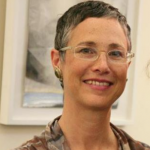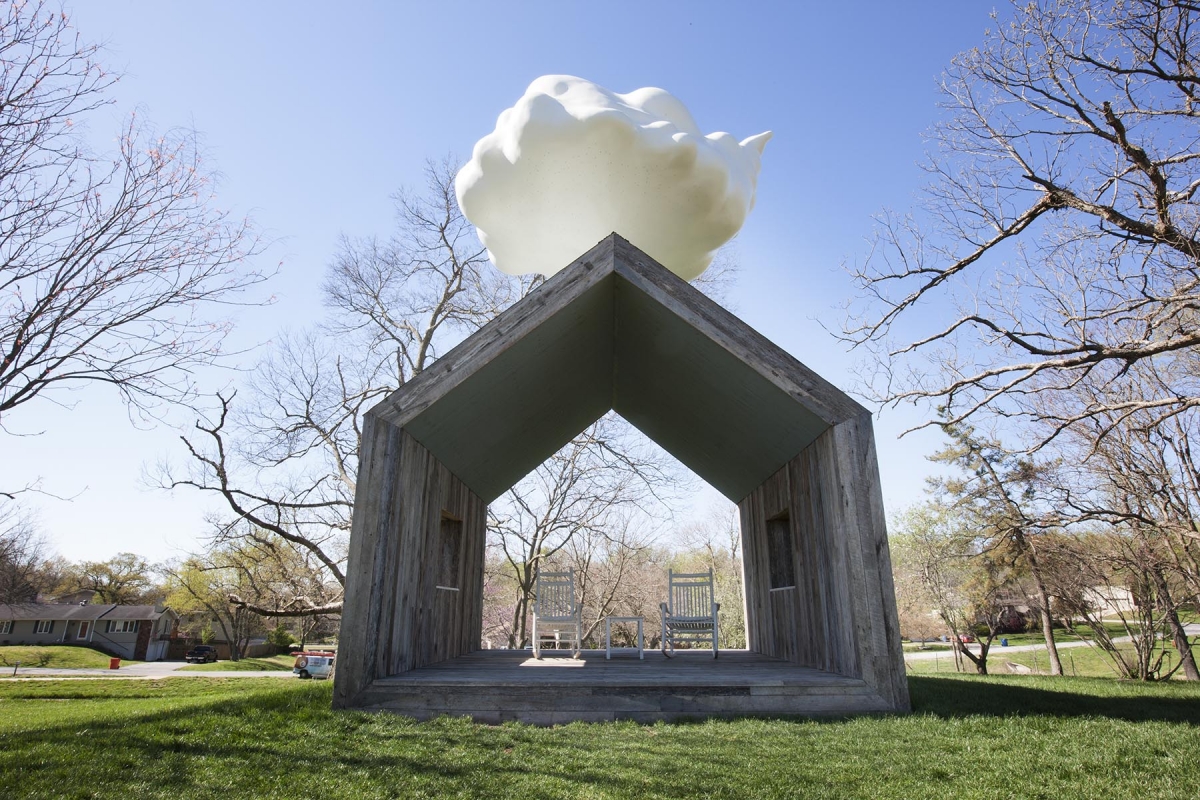CLOUD HOUSE, Springfield, Missouri
Posted by Aug 15, 2017

Ms. Patricia L. Watts
This post is part of our Public Art Network 2017 Year in Review blog salon.
In 2013, I moved to Springfield, Missouri, in the Ozarks, my ancestral region of six generations. After 32 years in California working as a museum curator and founder/curator of the nonprofit ecoartspace, I thought it would be meaningful to contribute to the local arts scene. In 2014, I attended the Americans for the Arts Public Art Network preconference in Nashville, Tennessee, and met Matthew Mazzotta. I knew of his projects, but had not met him in person yet. He had just received an award for his project Open House in York, Alabama, completed in 2013. Upon my return to Springfield, I received an email with a Call for Artists through the Springfield Regional Arts Council that a local developer, Matt O'Reilly, was looking for proposals to include public art at Farmers Park, his LEED multi-use development with apartments, retail, and a large pavilion where the Farmers Market of the Ozarks holds their bi-weekly public market. I contacted Jeff Broekhoven, who coordinated the Call, and he invited me to walk the property with him. I then inquired if they would accept a proposal by an artist from outside the region to work in collaboration with myself as a local independent curator; and if so, that the artist would like to meet with the community first before making a formal proposal. These were two parameters that were not options in the Call, but Broekhoven encouraged us to apply, so I called Mazzotta to confirm his participation, and we submitted a written process proposal immediately.
Not only did the work provoke conversations around “exploring the local, questions of ecology and dissecting the systems that make up our everyday experiences,” Cloud House has also provoked conversations about the power of art.
Without delay, our proposal to meet with the community first was accepted and on October 15, 2014, Matthew Mazzotta held one of his unique community arts strategies—an “outdoor living room” where he posed a series of questions to participants seeking to evoke a sense of place that would inform his proposed work. Questions he asked included: What are some unknown histories? What is the town’s identity? What are the challenges facing the community? What is something special or something secret about the town? Participants were invited to bring something from their living room—a chair, a table, a lamp, a blanket—and their ideas and understanding of the local culture. The Ozarks in Southwest Missouri is a mix of mega churches, ecological biodiversity, musicians, wacky entertainment in nearby Branson, charities, farms, and hide-outs (caves). After spending five nights at Farmers Park-in-residence, Mazzotta spent the next couple months developing several concepts for a public artwork, which he presented to O’Reilly at the beginning of 2015. This was a unique situation for Mazzotta. It was his first experience, coming from a community arts background, to collaborate with a developer in making aesthetic decisions.
By June 2015 we applied for a permit with the City of Springfield, and started construction on what is now referred as Cloud House.

Cloud House is an iconic “House” clad with barn wood, a tin roof, and a “Cloud” suspended directly above the structure. Inside the house are rocking chairs that, when sat upon, trigger the cloud to rain drops of water onto the roof, creating the sound of “rain on a tin roof”—a poetic experience that echoes our connection to the natural world. Through an elegant design and engineering feat, this whimsical and visually uplifting public sculpture engages a sense of disbelief. As the water flows down the tin roof and into an internal water reserve, water is directed to two side windows where it falls into planters below that are growing greens for public consumption.
As an ecological art curator who has participated on many public art panels through the years, this was the first time I had taken on the role of project manager for both the budget and construction, working for both the artist and the developer. Despite the confusion of who I was really working for and who was paying me, I sought to make sure that the project was executed with the vision of the artist and with the interests of the developer in mind—not easy. I was on the ground while installing pilings and during the welding of the steel framing, and was the eyes selecting barn wood, working with Amish who finished out the House. The budget ended up being larger than the developer had initially anticipated or desired. I advised the developer to create a fund through the local Community Foundation of the Ozarks to pay for the project so we could get discounts on materials and labor, which he did and titled Art for All. I think for a small community, not really understanding how this was a “public” artwork that was being placed on private land, that they wrangled with the idea that the developer did not want to pay “retail” for the project. In the end, over half of the estimated $255K final budget was from in-kind donations, in both time and materials.

This was the first ever permanent interactive public sculpture created in the City of Springfield (population 167,319), and with this size budget. Not only did the work provoke conversations around “exploring the local, questions of ecology and dissecting the systems that make up our everyday experiences,” Cloud House has also provoked conversations about the power of art. When an artwork costs as much or more than a home in the surrounding area, people take note. The developer was pleased with Mazzotta’s vision; when presenting the project to the public in 2016 at an Earth Day celebration, was able to eloquently articulate the role Cloud House plays for the Farmers Park development and for those who get to experience the public sculpture.





